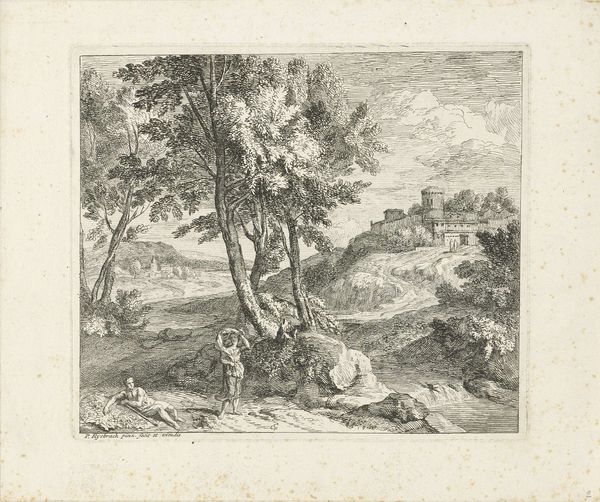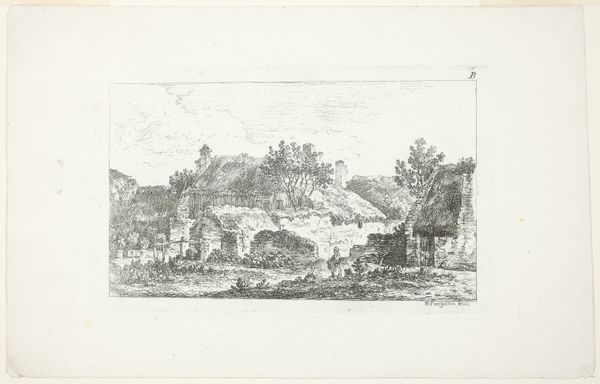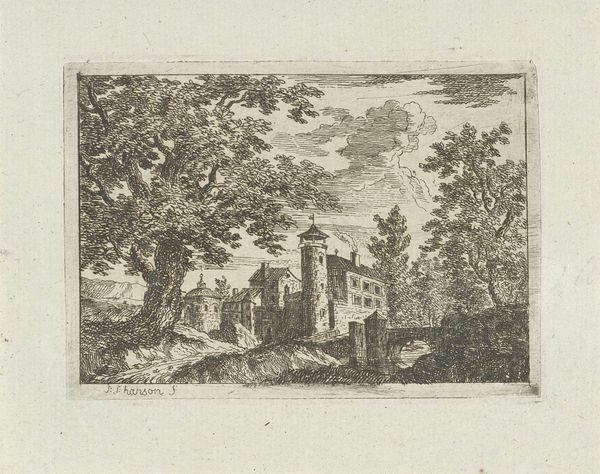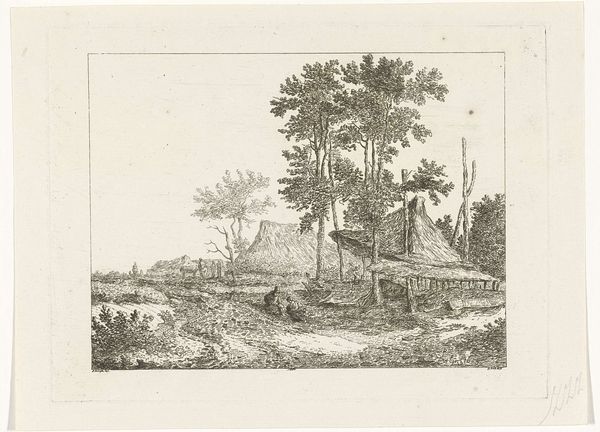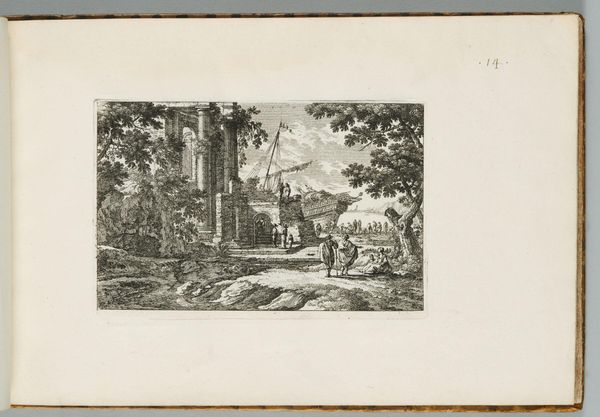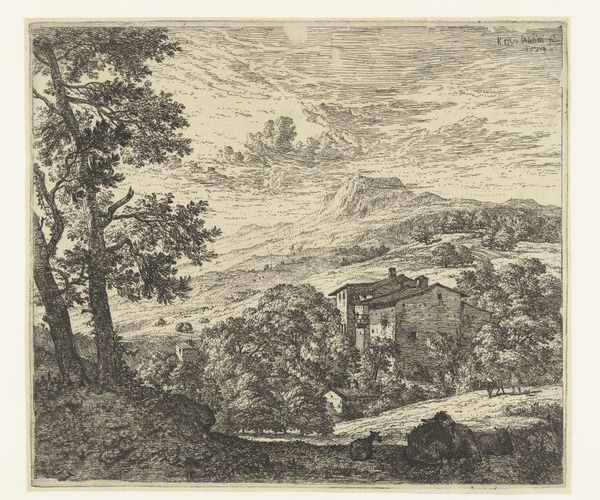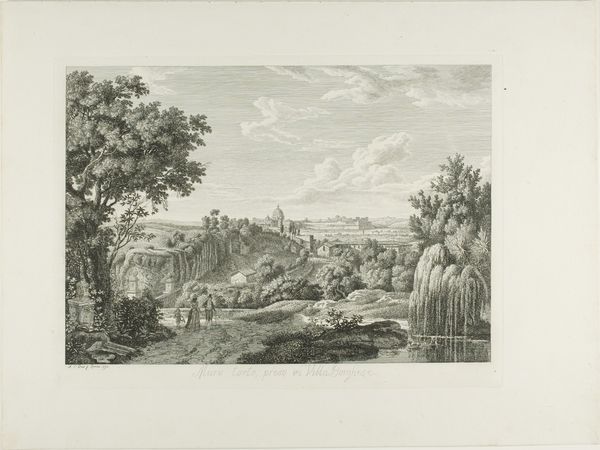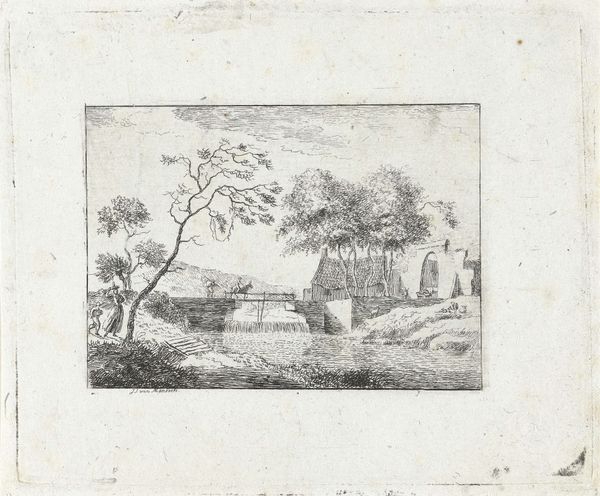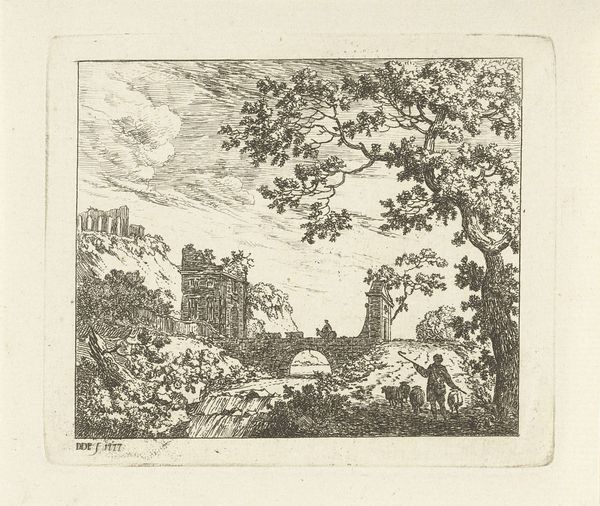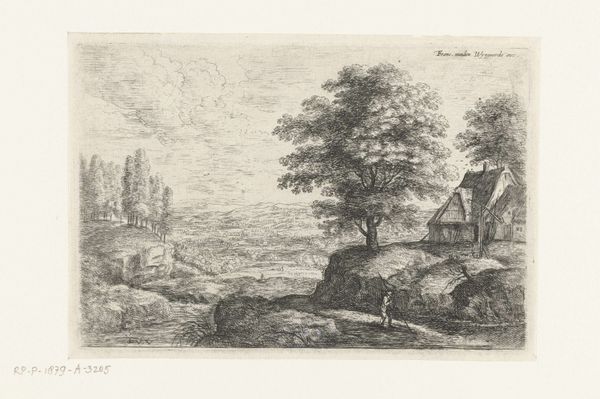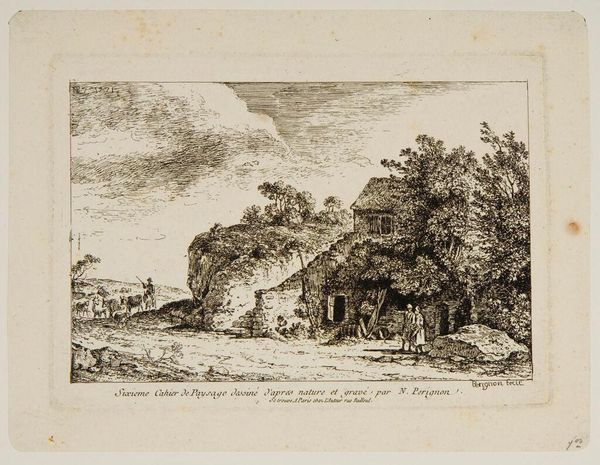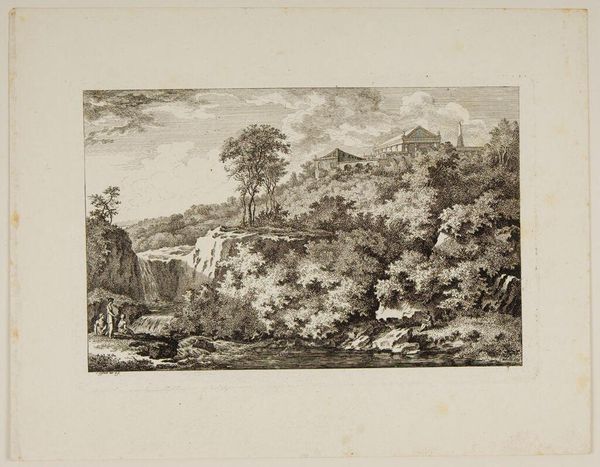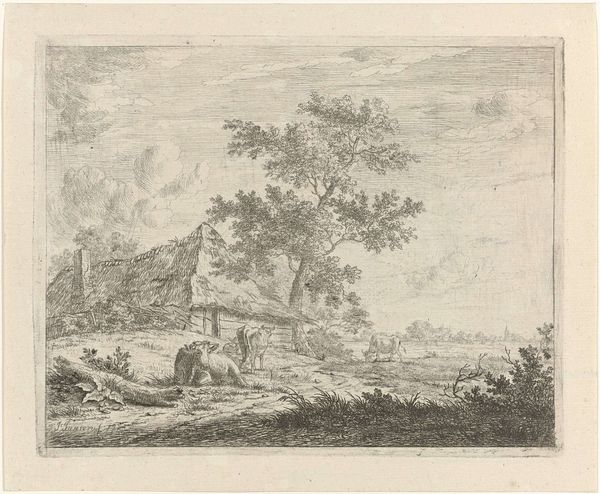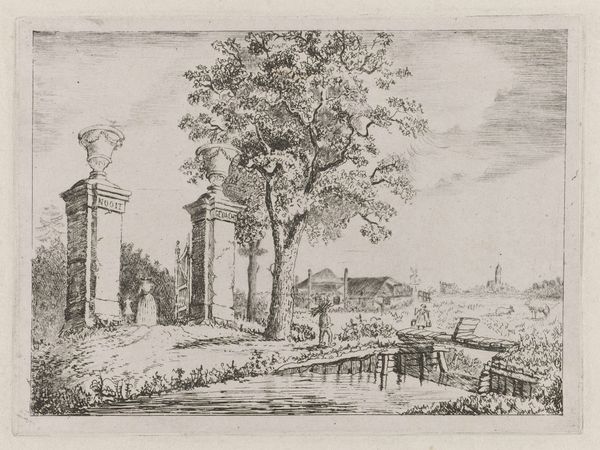
drawing, lithograph, print, etching, paper
#
drawing
#
neoclacissism
#
lithograph
# print
#
etching
#
landscape
#
figuration
#
paper
#
line
#
realism
Dimensions: 196 × 265 mm (image); 285 × 417 mm (sheet)
Copyright: Public Domain
Curator: Here we have "Landscape, plate IV" etched, drawn, and lithographed by Achille Etna Michallon in 1817, held at The Art Institute of Chicago. What is your initial impression? Editor: Austere, yet balanced. The composition, primarily in monochrome, feels deliberate. The bridge and architectural details draw the eye across the page, anchoring the scene. Curator: Indeed, the structural clarity speaks to the Neoclassical influence, but what I find striking is how the human element intertwines with a landscape bearing traces of ancient times. Look at the ruins incorporated into the more modern structures. What stories might they whisper to us? Editor: I see it in terms of line. Michallon varies line weights, creating visual texture—a rough immediacy in the foreground leading to a lighter touch defining distant features. There’s a sense of recession and spatial depth accomplished by such control. Curator: I agree about his use of line, it serves as more than mere technical skill. Bridges and aqueducts throughout history represent connection, of course, but the half-crumbled bridge implies memory, survival. Are the small figures crossing it aware of what came before, or merely existing in its shadow? Editor: Semiotically, the bridge can be understood as both an axis mundi—a pathway between worlds—and an embodiment of transition, connecting present to past but also dividing the wildness of nature from civilized construct. Curator: Fascinating! The ruined structure certainly carries symbolic baggage, acting almost as a constant memento mori within an otherwise functional setting. One era constantly layering itself atop another. I see how our relationship to time is made manifest. Editor: It does invite layered readings, but its skillful execution solidifies its enduring appeal. Michallon harnessed the power of form to transcend pure representation. Curator: He did manage to capture so much, inviting reflections on history and human experience, all framed by the artistic conventions of his time. Editor: Precisely, I came into this focused on line and structure, but the context and human meaning do create new ways to engage with form.
Comments
No comments
Be the first to comment and join the conversation on the ultimate creative platform.
